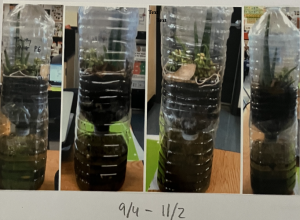Dual threat to the environment, A direct one to humans
By Norran Yu, 11Grader




Impact on the Health of Communities
White phosphorus is infamous for its usage in war due to its deadly characteristics such as being able to stick firmly to skin and clothing. Under international law, they are heavily regulated.
Communities are not only affected by its incendiary properties, but also its airborne toxicity and lingering health effects.
As soon as white phosphorus come into contact with human skin, it will start to burn rapidly due to its vicious reaction with oxygen. It has the ability to burn underwater due to the presence of oxygen in dihydrogen monoxide. Until the phosphorus itself is used up, it will not be able to stop burning.
Furthermore, if white phosphorus is present during or after treatment, it may reignite with the oxygen around it. Hence, the repercussions against using it.
The World Health Organisation (WHO) stated that “white phosphorus is harmful to humans by all routes of exposure. The smoke from burning phosphorus is also harmful to the eyes and respiratory tract due to the presence of phosphoric acids and phosphine.” If ingested in a quantity large enough, white phosphorus can often be fatal. Breathing in oxidised phosphorus for an extended period of time will also cause lingering damages to
the lungs.
Therefore, white phosphorus is a chemical that should be heavily restricted and never exit the laboratory. Additionally, it should never be used as a weapon. Current conflicts have evidence showing the usage of white phosphorus. This can greatly impact a community and its inhabitants. Using the knowledge about this chemical, one can be aware of what is happening and help advocate for the better.
David Schindler
David Schindler is a Canadian scientist known for his efforts to protect freshwater resources in Canada. He made studies in the 1970s on the role of phosphorus in stimulating algal blooms in North American lakes. During that time, algal blooms were becoming a crisis in Lake Erie. The government rushed to find the nutrient responsible for lake eutrophication. This lead to David’s initiative in conducting several full lake studies. For several years, he divided a body of water with one receiving carbon and nitrogen, while the other additionally receiving phosphorus.
The aerial image of of the algal bloom only in the phosphorus-enriched half of the lake became famous worldwide for its milestone in aquatic research. The experiment lead to governments deciding to reduce phosphates in detergents and municipal waste waters.

Glossary
- Allotrope: one of several forms or structures that an element can exist in. Allotropes can have different properties, depending on its structure
- Empirical formula: the empirical formula of a chemical compound is the simplest whole number ratio of atoms present in a compound
- Exothermic: a chemical reaction that releases energy in the form of heat
- Alkalinity: alkalinity is the capacity of water to resist acidification
- Eutrophication: eutrophication is the process in which a water body becomes overly abundant with nutrients, leading to the plentiful growth of simple plant life such as algae.






